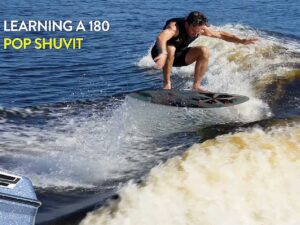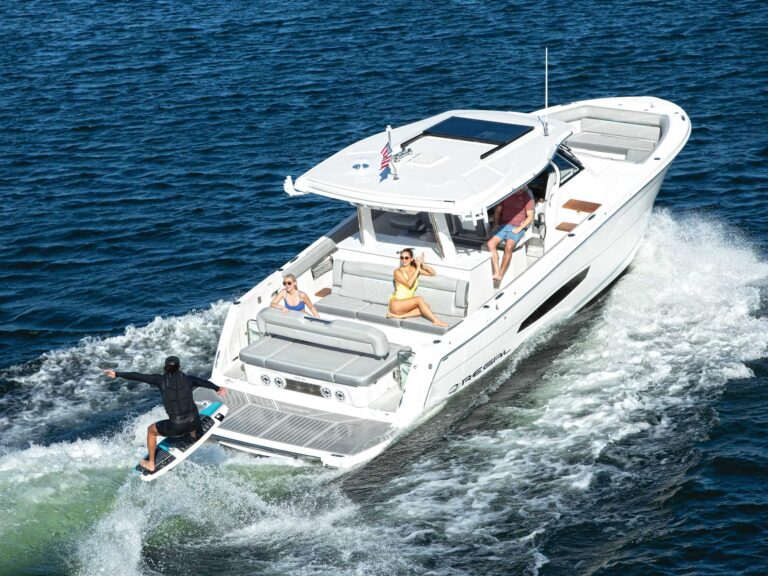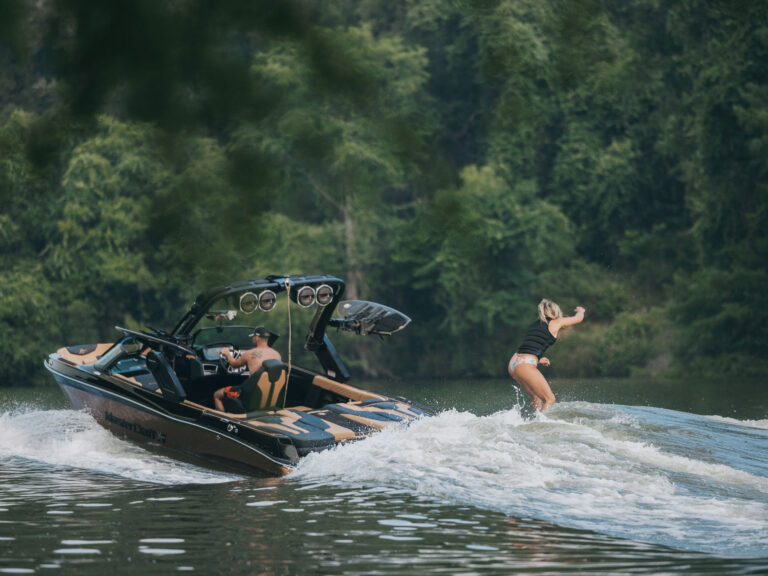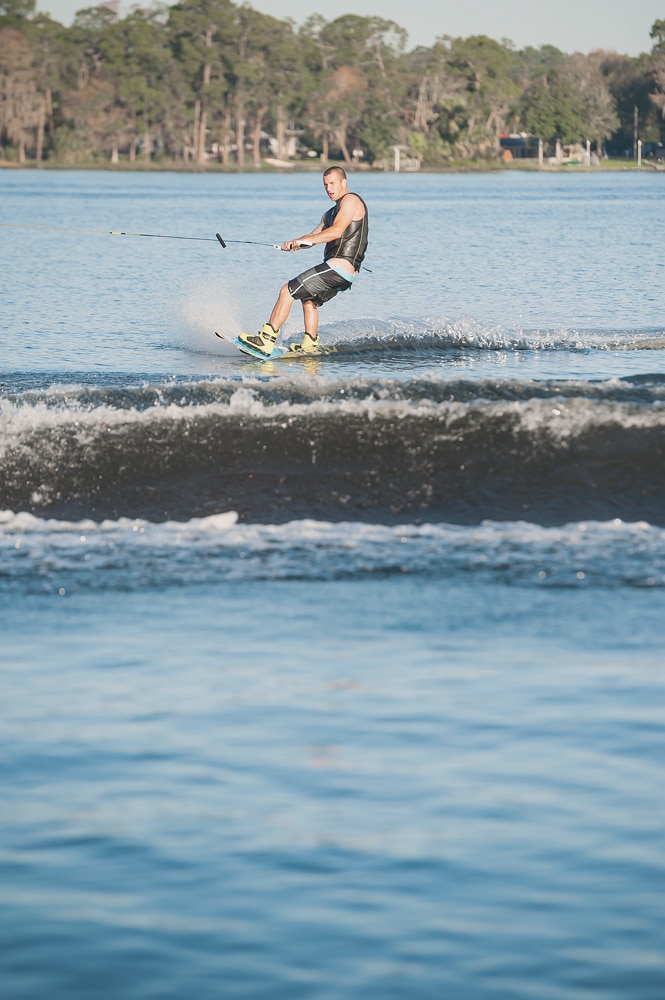
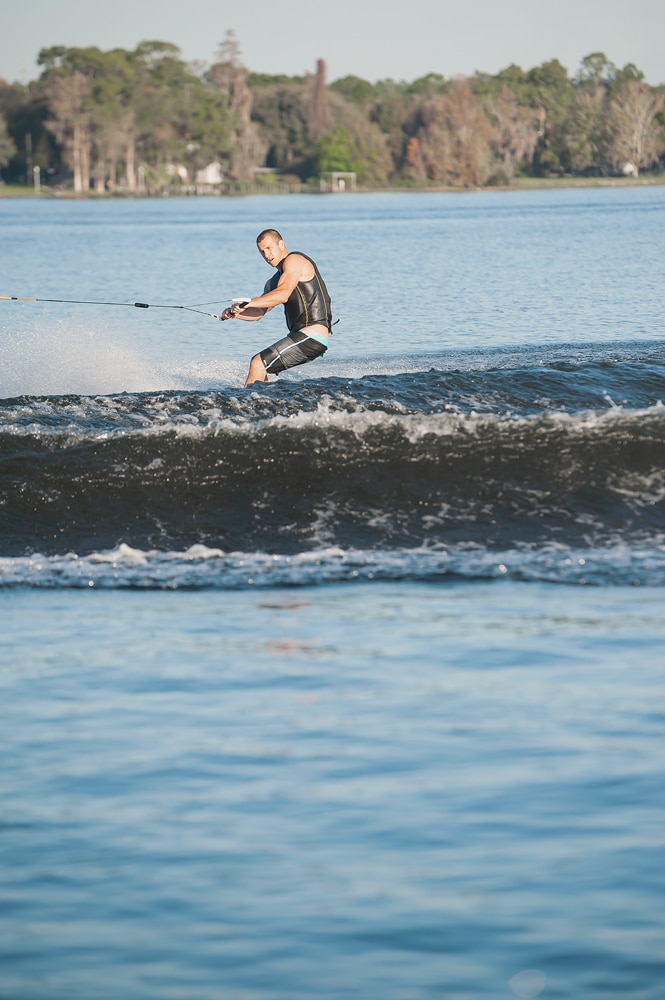
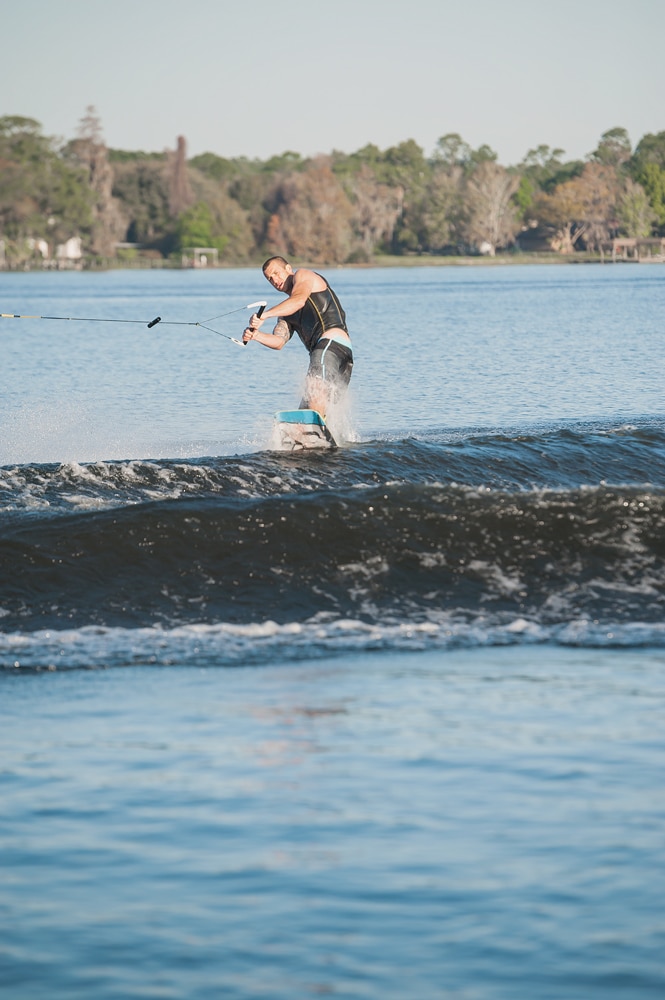
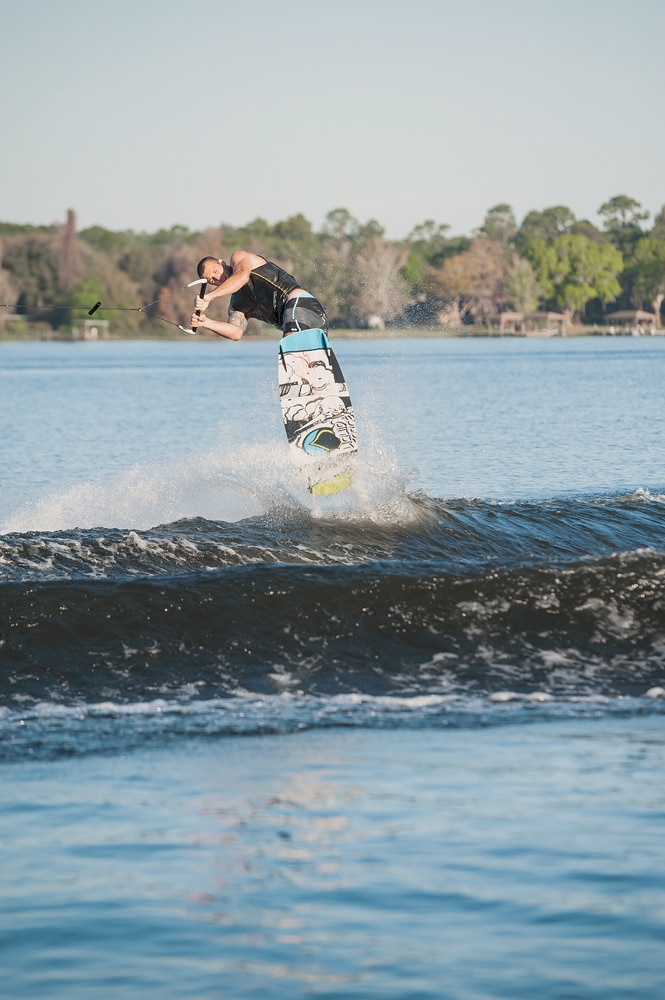
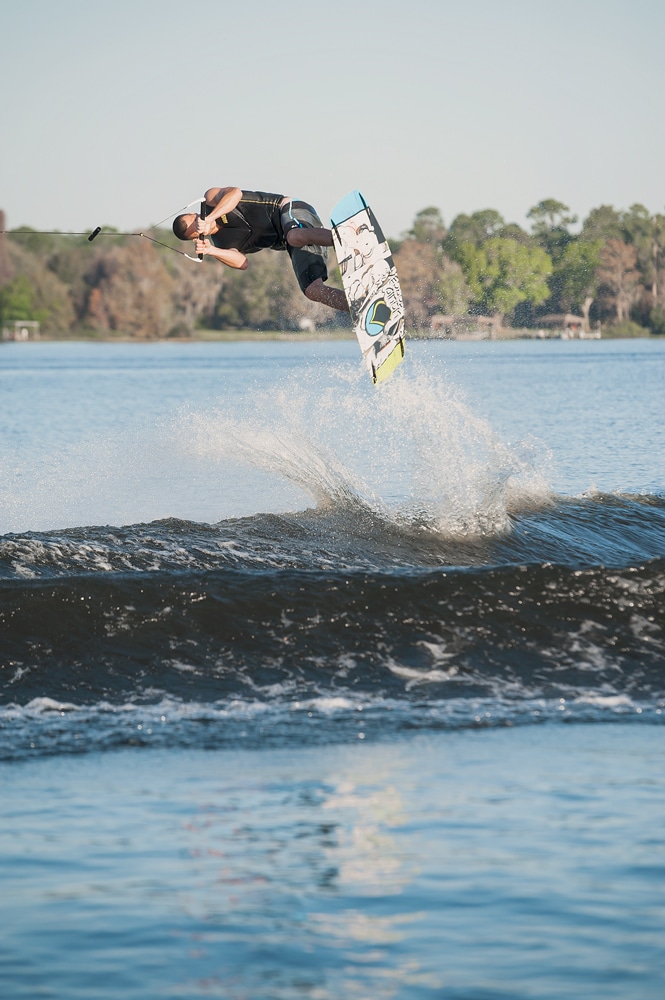
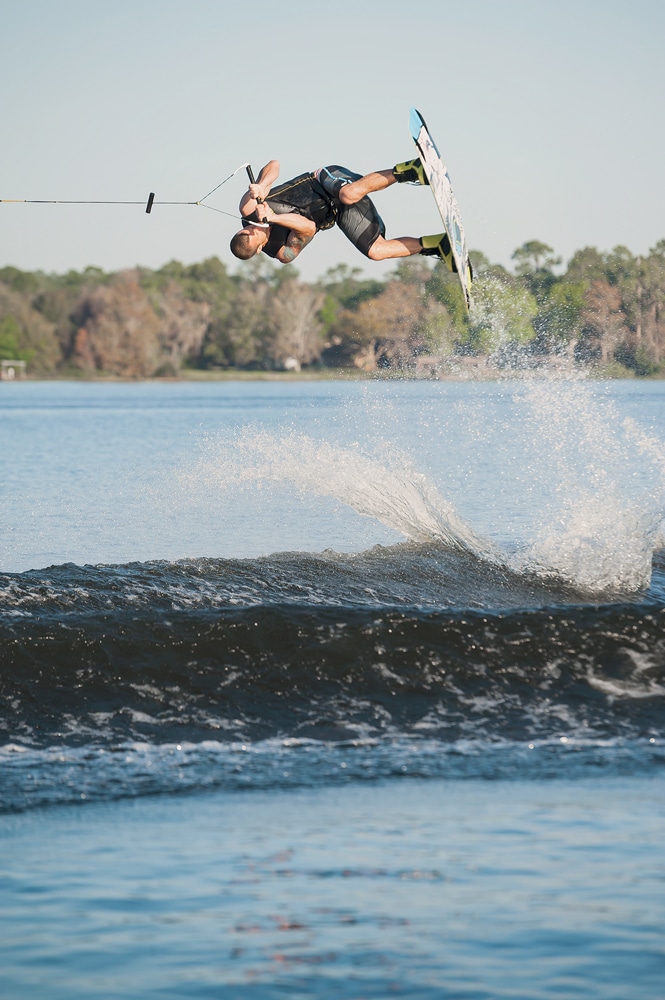
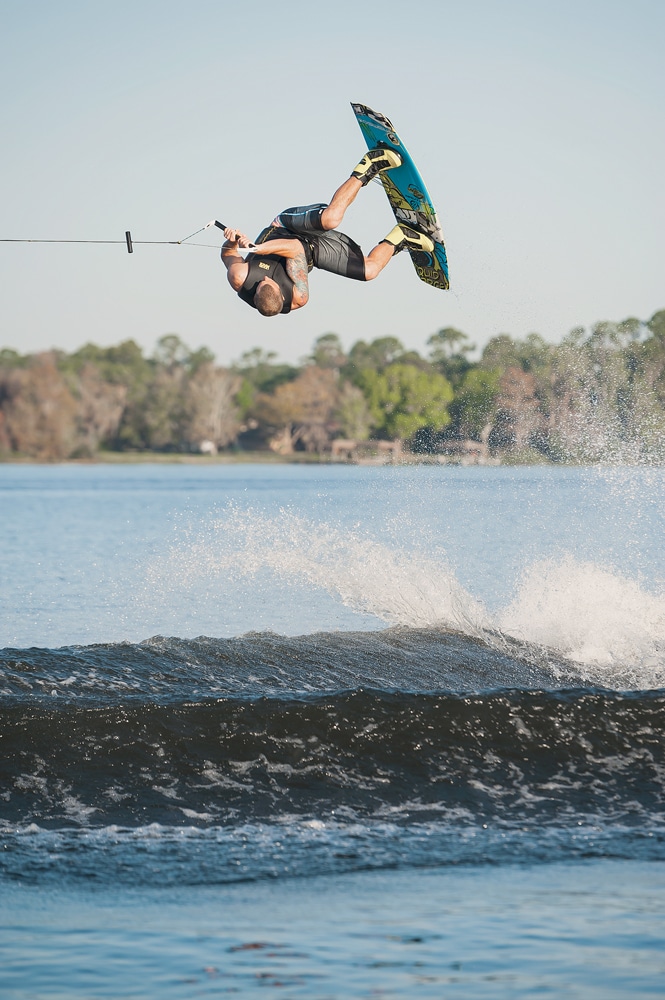
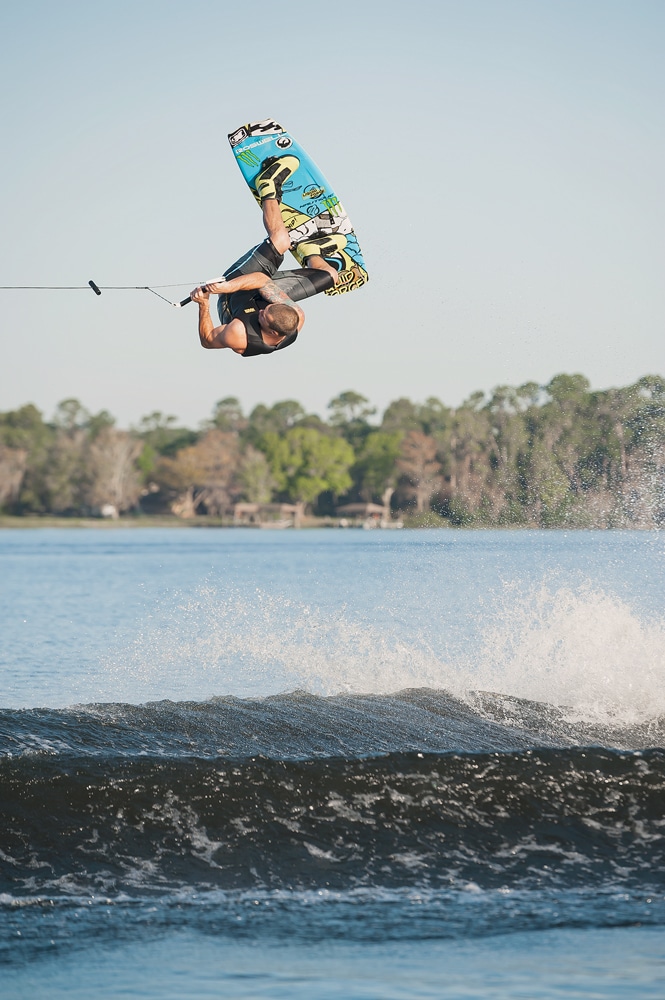
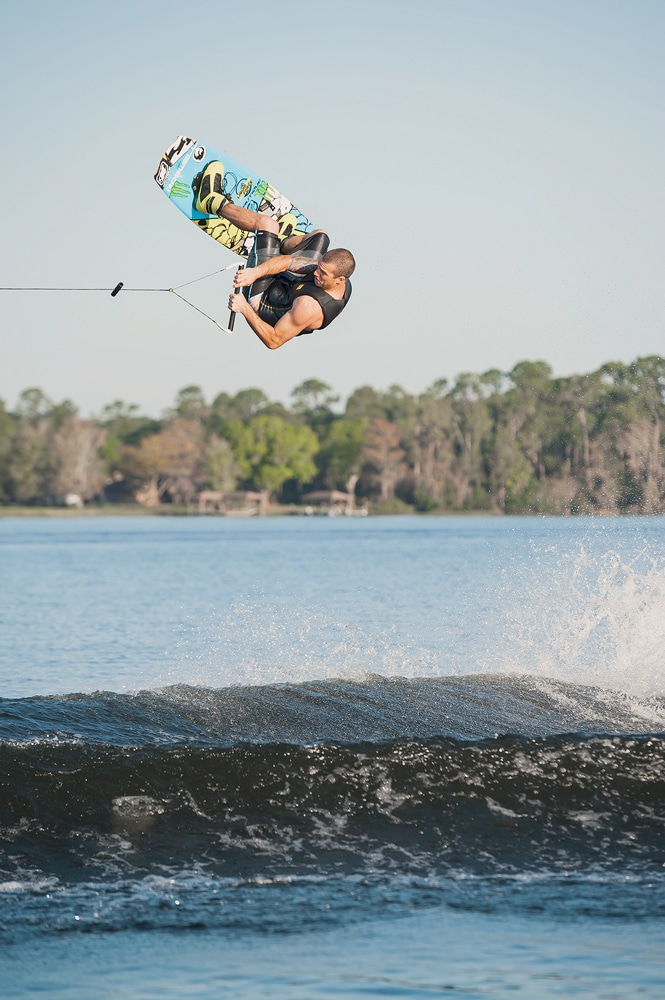
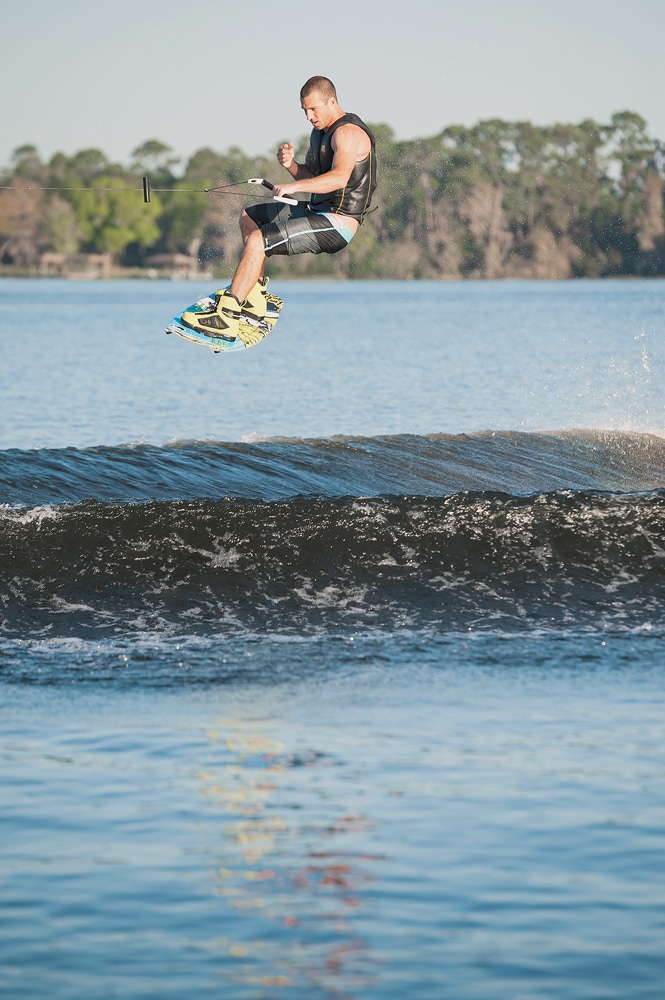
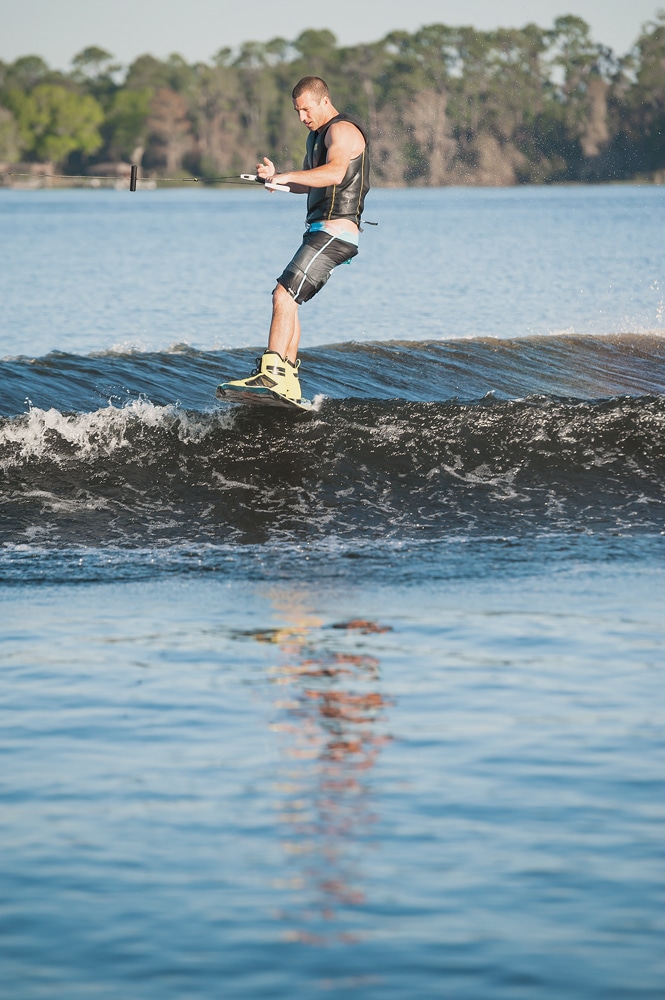
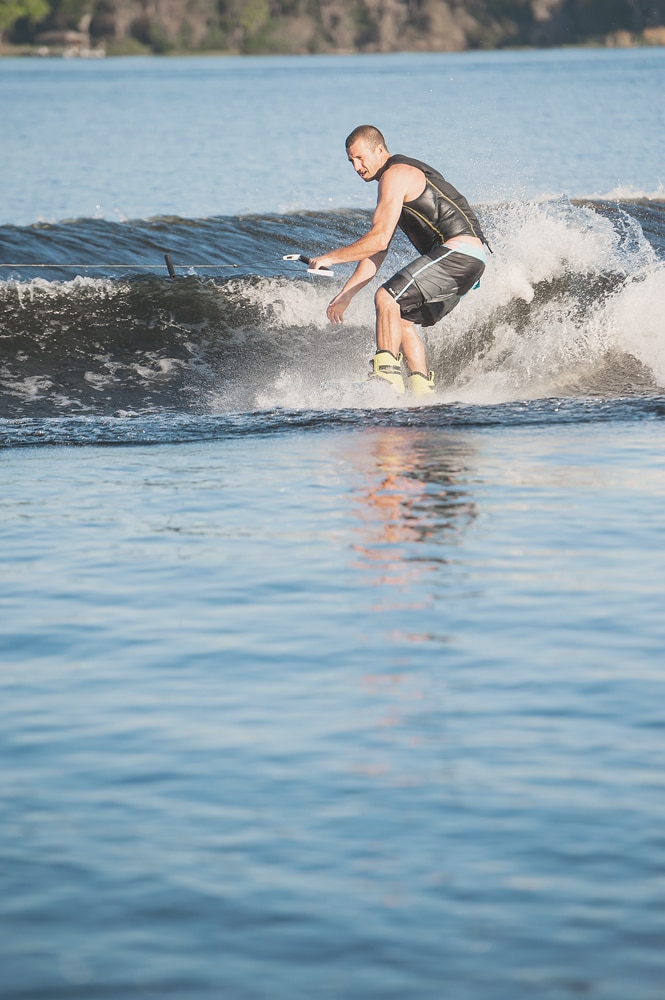
Progressive Heelside Back Roll with Shawn Watson
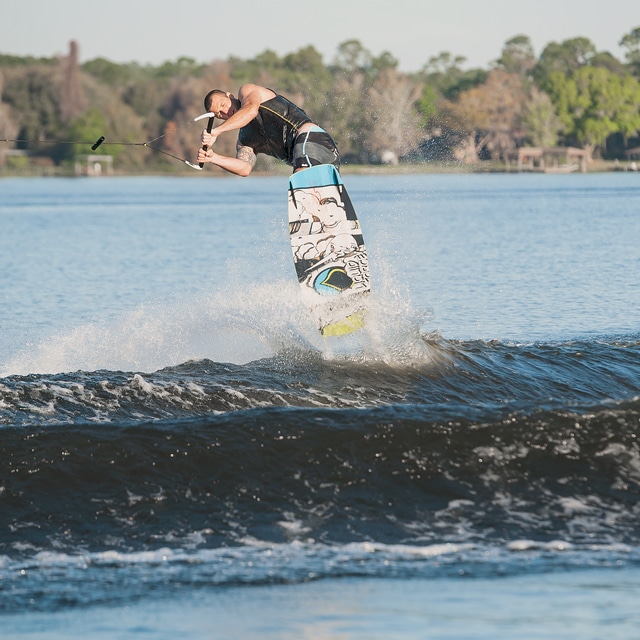
The key to learning this flip is figuring out the correct pop. The heelside back roll is a load-and-release-style invert. This means that the flip’s function is dependent on line tension. To learn how the physics work, it is best to break it up into a series of small steps in a low-impact environment. “It was more trial and error for me when learning,” Shawn Watson says. “First, I tried inside outs to get the rotation, then I went to a 60-foot rope length to land it and then gradually lengthened my rope out to the normal riding length.”
When you begin your wake-to-wake attempts, keep your approach short and progressive. This means that you will have to edge into the wake exponentially by forcing yourself to save your hardest lean against the rope for when you are edging through wake in a tall edging position. “When starting the approach, I think of using a 1-10 edging scale into the wake,” Watson says. “I’m going to be at a 1 on my initial approach and gradually building up my lean so that I’m edging my hardest at about a 6 as I’m going off the top of the wake.”
This edge will only function properly if you stand fully tall at the wake. In order to get good pop, keep your hips pushed forward and your shoulders back against the rope the entire time you edge through the wake.
“I think about edging all the way through the top of the wake and rotating the tip of my board away from the wake and up into the sky,” Watson says. “As I leave the wake, I look over my shoulder up into the sky and keep looking that way until I spot the wake. I then let go of my back hand to stop my rotation and land down the back side of the wake for a nice soft landing.”
Keep in mind that there is a natural 90-degree frontside rotation inherent in this invert. To avoid slipping out over your heels on landing, simply cancel out the accidental frontside rotation by pushing the handle out toward the flats a bit when you spot the water.

